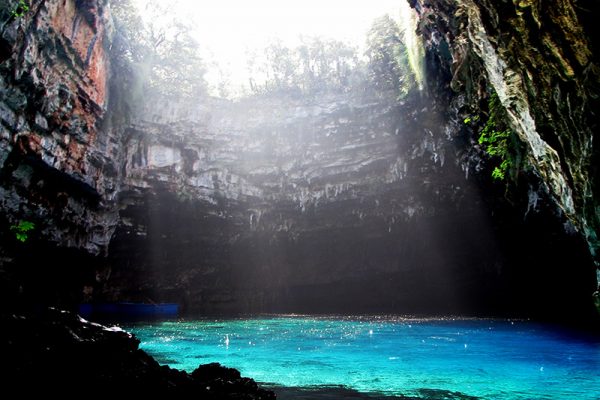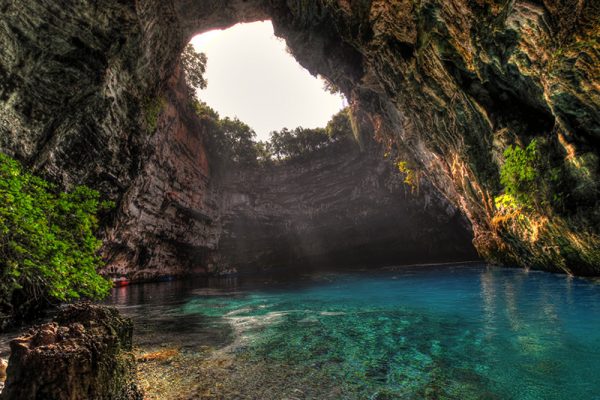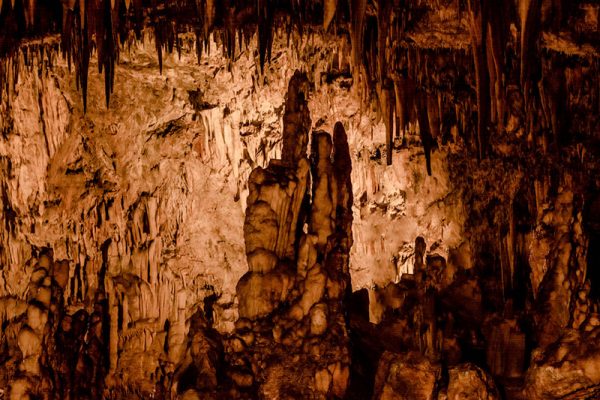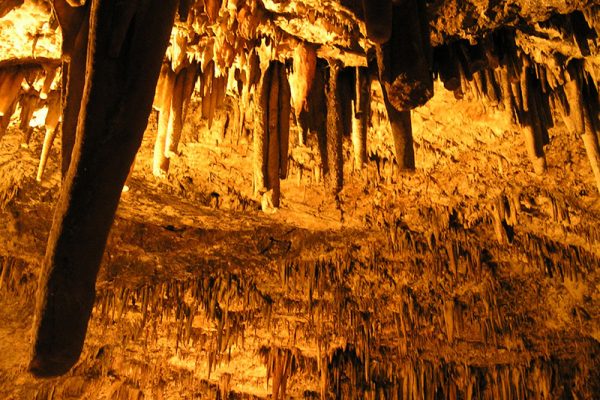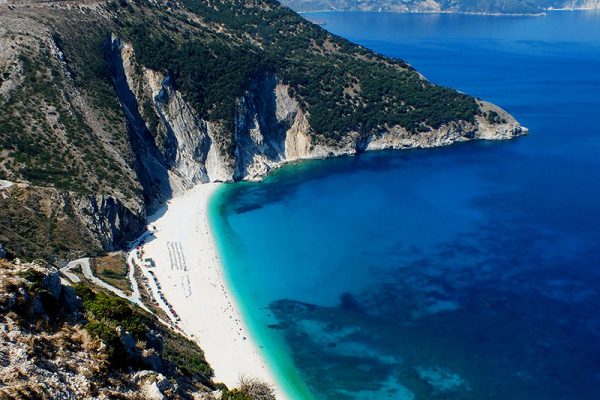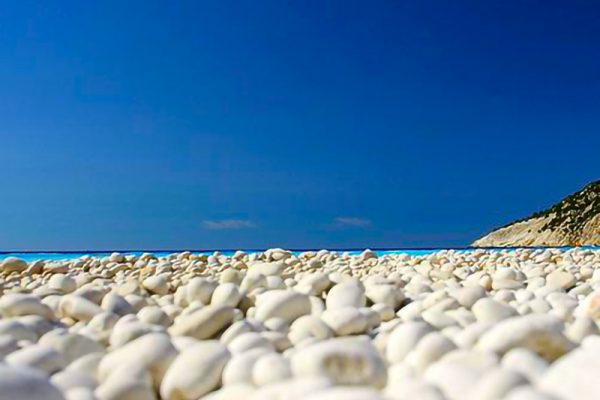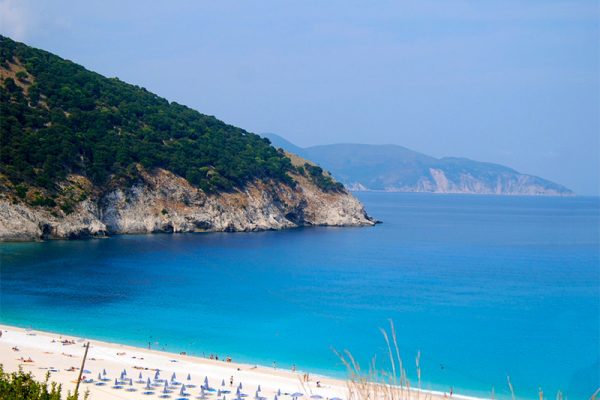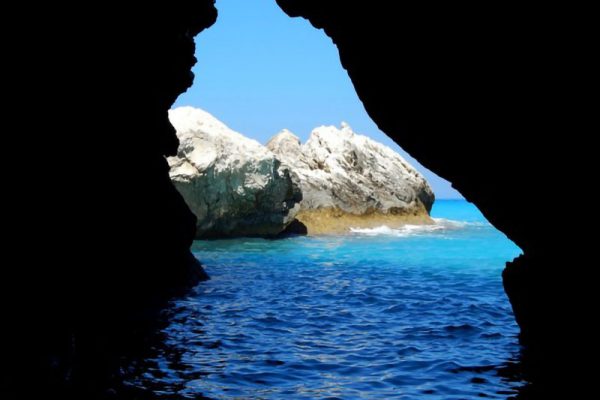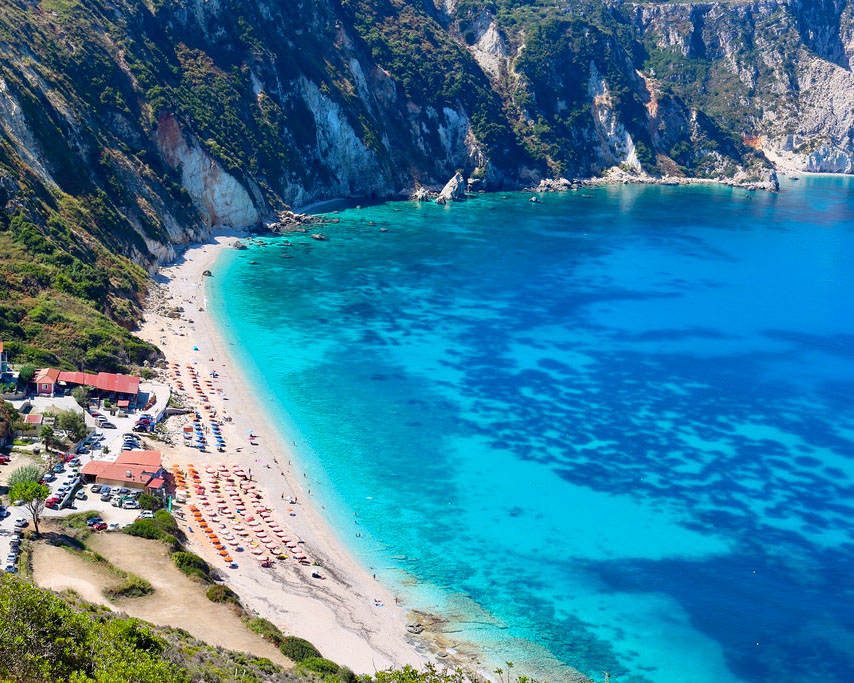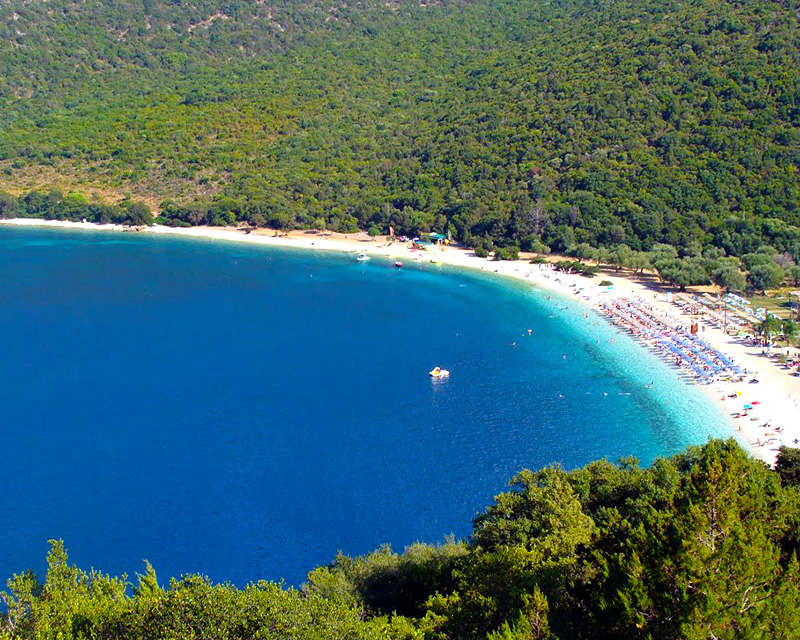Katavothres
Near the entrance to Argostoli’s natural harbor are the famous katavothres (swallow,holes), a remarkable geological phenomenon, where the seawater disappears into large holes at various points along the shore. Where the water went from there remained an unsolved mystery until 1963, when a team of geologists poured a quantity of uranin, a fluorescent dyestuff, into the swallow – holes. Two weeks later traces of uranin, reappeared at several places near sami: at the springs of karavomilos , at fridi, at Ayiaefimia and in the Melissani lake cave. The experiment proved that the water travels 15 kilometers underground through rifts in the limestone. By the time it reaches the east coast and re – enters the sea it is brackish, because it mixes with subterranean steams of fresh water along the way. In the nineteenth century a mill powered by a natural flow of water was built at Katavothres and it was later adapted for use as a small ,hydroelectric generating plant. The building has been restored since the earthquakes and is now a coffee – house.




